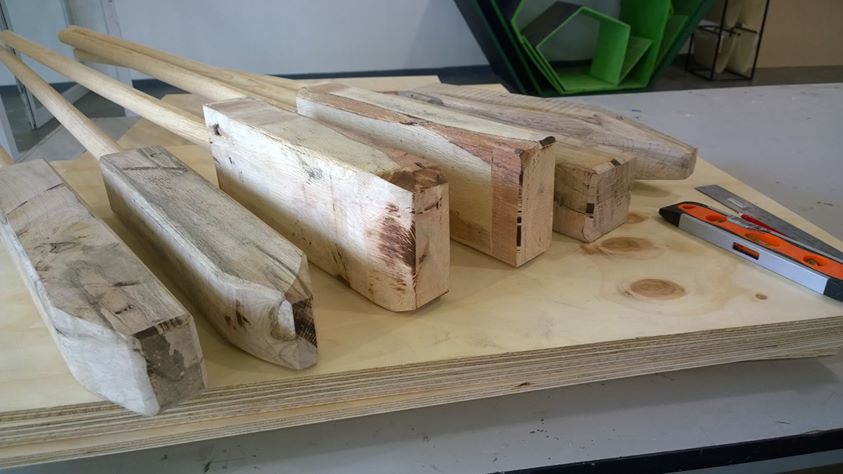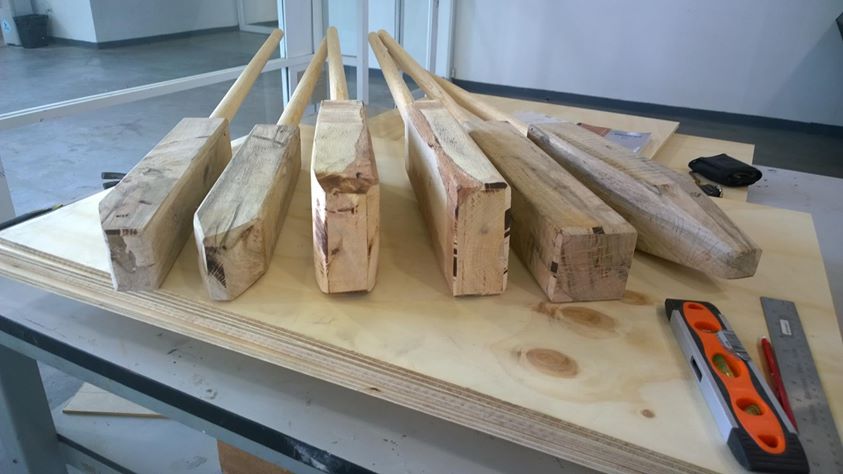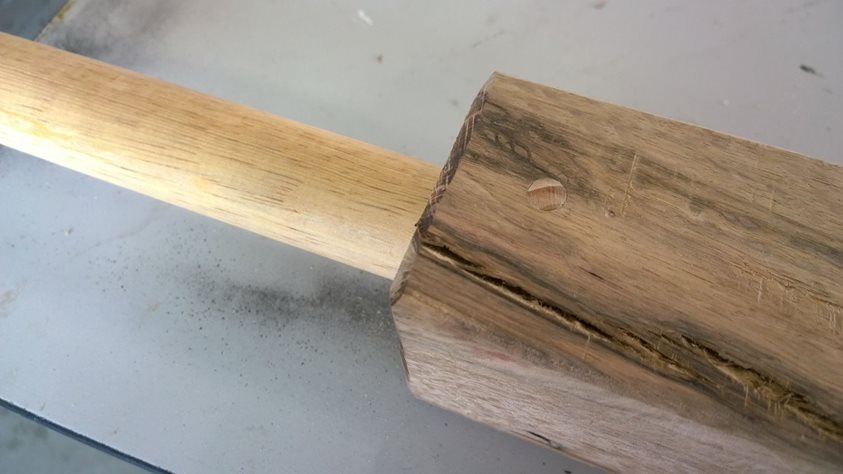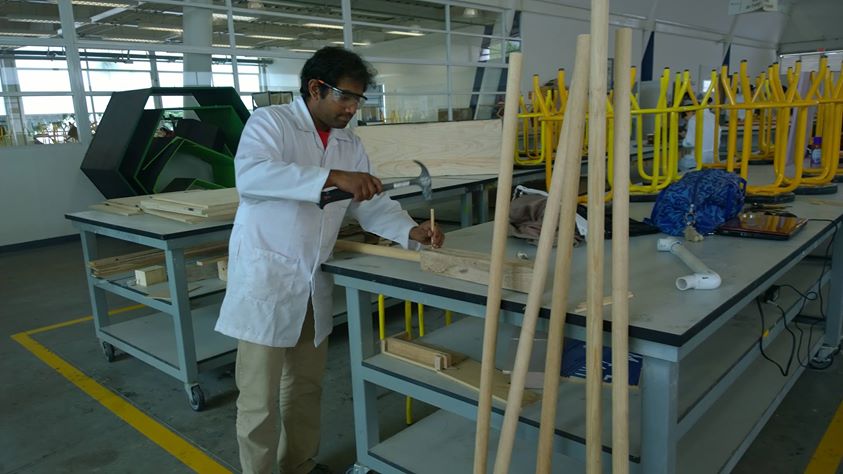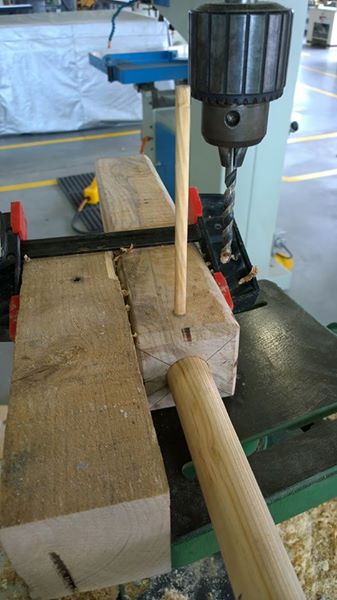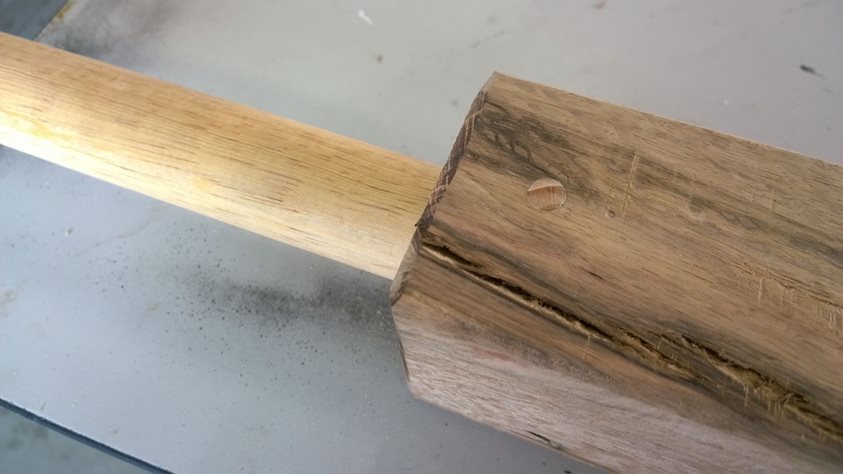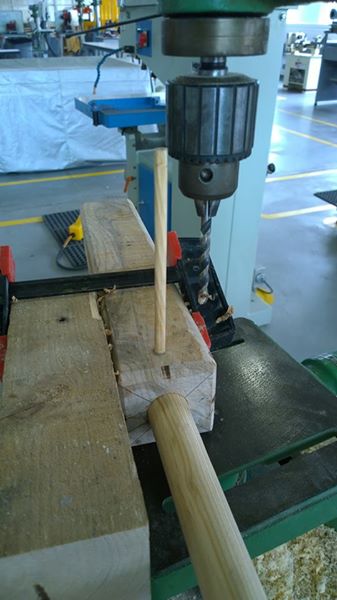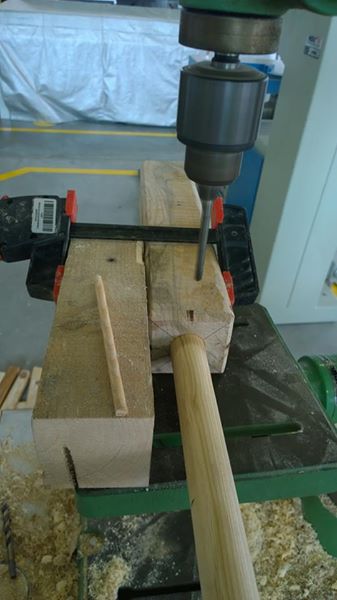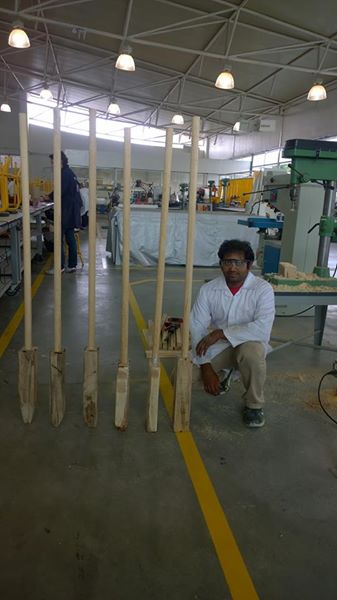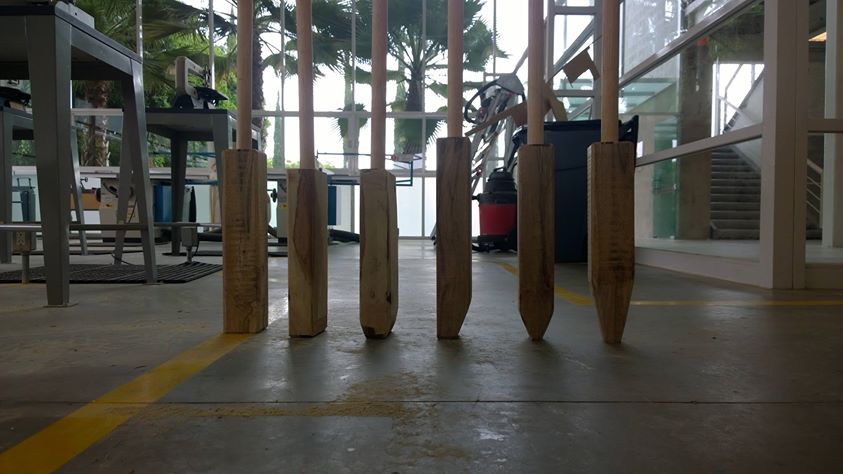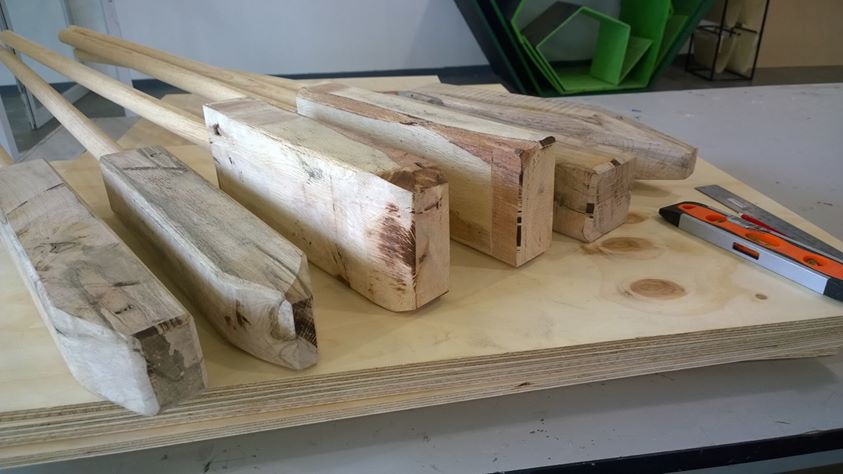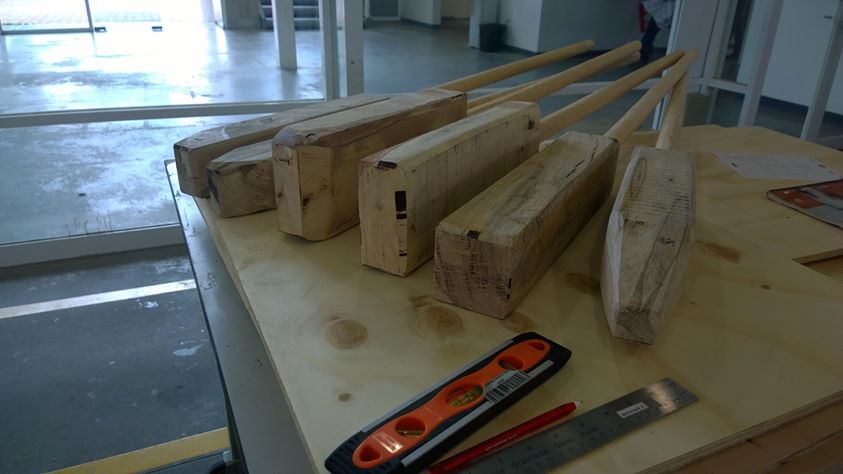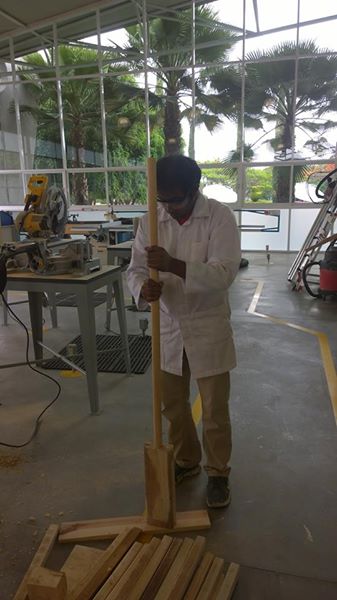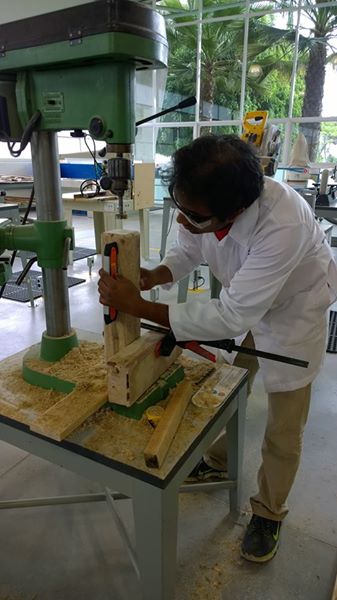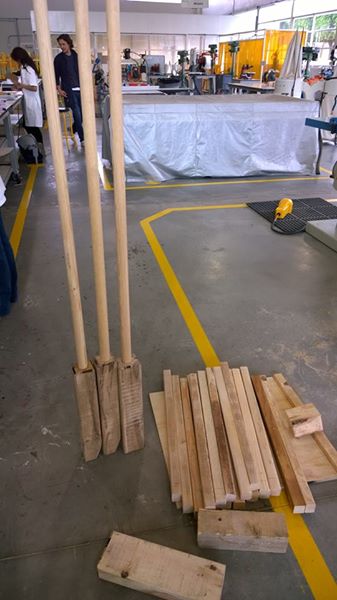Research on Rammers for Rammed earth, Queretaro, Mexico
April 2015, ITESM, Queretaro, Mexico
The main purpose was to look at the effect of shape and geometry of different rammers in rammed earth construction.
Rammers of equal weight were fabricated in a workshop with the base wood of a pine tree. Each rammer weighed approximately 8 kilos. The rammers were tested in a workshop to observe the amount of compaction, ease of handling, speed of construction.
What was observed that the rammer shape recommended by 17th century architect builder Francois cointreaux worked the best. Very little mud stuck to its base as the area of the base was relatively the smallest. This is quite important as valuable time and rythm is usually lost in cleaning the base of a rammer (modern metal flathead rammers). Compaction was clearly the best as it took only one stroke per point to obtain the maximum possible compression through human effort. It was easier to cover a given area without missing a point of compression.
However relatively the same number of blows were needed by all rammers.

Les carnets de l’architecture de terre. Une grande figure du patrimoine régional Rhône-Alpes. François Cointeraux (1740-1830), pionnier de la construction moderne en pisé

